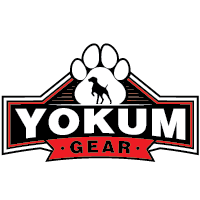Understanding Positive Reinforcement Dog Training
Positive reinforcement dog training is a humane and effective method for teaching dogs good behavior by rewarding them for performing desired actions. Unlike other training methods that rely on punishment or negative reinforcement, positive reinforcement focuses on encouraging and rewarding good behavior, making the training process more enjoyable for both the dog and the owner.
This style of training uses rewards such as treats, praise, and toys to reinforce behaviors that you want your dog to repeat. Over time, your dog will come to associate these behaviors with positive outcomes, making them more likely to perform them even when rewards are no longer immediately forthcoming.
Benefits of Positive Reinforcement Training
There are numerous advantages to using positive reinforcement training for your dog:
- Builds Trust: Positive reinforcement helps to build a strong bond and trust between you and your dog. Your dog will learn that you are a source of good things, which can enhance your relationship.
- Enhances Learning: Dogs learn more effectively when they are happy and relaxed. Positive reinforcement creates a supportive learning environment where your dog feels safe and motivated to learn.
- Reduces Behavioral Issues: By focusing on rewarding good behavior, you can help reduce unwanted behaviors and replace them with positive actions.
- Versatility: This method can be used for a wide range of training needs, from basic commands like “sit” and “stay” to more complex behaviors and tricks.
Here are some steps to find a reputable positive reinforcement dog trainer in your area:
Start with Research
Begin by searching online for dog trainers specializing in positive reinforcement in your locality. Use search terms like positive reinforcement dog training near me or reward-based dog trainers. Websites, reviews, and social media pages can give you a good sense of what trainers are available in your area.
Ask for Recommendations
Word of mouth is powerful. Ask friends, family members, or your veterinarian if they can recommend a positive reinforcement trainer. Personal experiences from trusted sources can point you in the right direction.
Check Credentials and Experience
Look for trainers who are certified by reputable organizations such as the Certification Council for Professional Dog Trainers (CCPDT) or the International Association of Animal Behavior Consultants (IAABC). These certifications often require trainers to pass rigorous exams and adhere to a code of ethics.
Interview Potential Trainers
Once you have a shortlist of potential trainers, set up interviews to discuss your goals and expectations. Ask about their training methods, experience, and how they handle specific behavioral issues. A good trainer will be happy to answer your questions and explain their approach.
Observe a Training Session
If possible, observe a class or private session. This can give you insight into the trainer’s interaction with dogs and owners, and whether their methods align with your values. Look for trainers who are patient, knowledgeable, and use humane methods.
Consider Group Classes or Private Lessons
Decide whether you prefer group classes or private lessons. Group classes are an excellent way for your dog to learn socialization skills and basic commands in a controlled environment. Private lessons can provide a more tailored approach to address specific issues or to fit your schedule.
Evaluate Progress and Adjust Accordingly
After starting with a trainer, monitor your dog’s progress. Positive reinforcement training should result in noticeable improvements in behavior. If you are not seeing the desired changes or if something feels off, don’t hesitate to discuss your concerns with the trainer or consider trying a different one.
Conclusion
Finding the right positive reinforcement dog trainer can make a significant difference in your pet’s behavior and your relationship with them. By taking the time to research, ask for recommendations, and carefully evaluate potential trainers, you can find a skilled professional who will help your dog learn and thrive. Whether you're beginning with basic commands or addressing more complex behavioral issues, a positive reinforcement approach will ensure a happier, healthier life for you and your furry friend.

